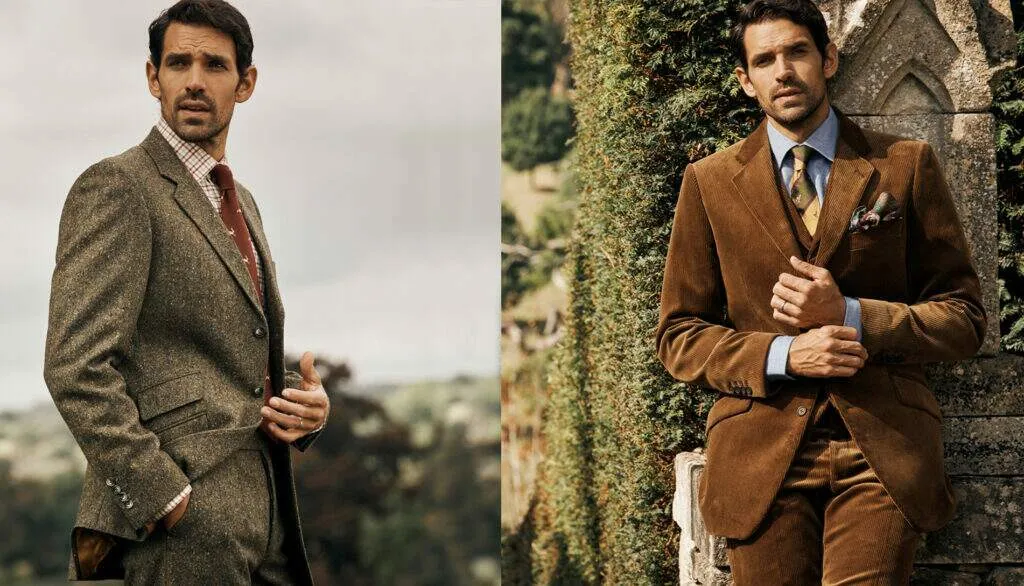Men's fashion suffers significantly in surrounds. Seasons require comfort, style, and adaptation. Combining allows for personal expression and practical benefits. Layering provides warmth, breathability, and style for every weather. Knowing how to layer will improve your style and self-esteem whether you go from winter to spring or summer to fall.
Essential Principles for Men's Fashion Layering
Layering enhances comfort, versatility, and creativity in men's fashion. Mastering this discipline requires understanding the principles of a clean and balanced look. Layering has three main components: the base layer regulates moisture and is closest to the skin. Midlayer offers warmth and insulation; upper layer protects against weather. Each layer has a purpose; the next should be enhanced.
Fabric selection improves comfort and usability. Base layers should be cotton and a wool blend; mid-layers should be fabric, wool, or synthetic fibers. Perfect is a weatherproof trench coat or waxed jacket. The objective is warmth and breathing freedom. Every layer should enhance body shape. A tight base layer reduces bulkiness, while the top layer should suit the inner layers without seeming huge. The mid-layer should enable mobility.
A consistent color palette and different materials give an ensemble depth. Neutral foundation layers vary, whereas mid-layers contrast. Layering textures like a wool sweater over a clean shirt adds visual attractiveness. Layering should be moderate. Disposable layers respond to temperature; warm, lightweight fabrics avoid discomfort.
Read also: Men's Rockabilly Fashion: Important Style Tips and Tricks
Using Textures and Fabrics Together for Efficient Layering
Learning how to layer involves carefully blending fabrics and textures to create a beautiful and useful ensemble, not just piling clothes. Balancing contrast, weight, and breathability with each layer is key. To maintain structure and prevent weight, start with cotton, merino wool, or moisture-wicking synthetics near to the skin.
Mid-layers like cashmere sweaters, wool pullovers, and quilted vests should insulate without adding weight. Durable, breathable wool coats, denim jackets, and waterproof shells are ideal outerwear. Multiple textures provide character to an outfit. Wearing a thick knit sweater with a smooth cotton shirt produces a striking contrast. Covering a soft flannel shirt with a leather or waxed cotton jacket is rough yet delightful. Interaction between rough and smooth surfaces promotes layering.
Using complementary colors and textures completes a look. While neutral base layers are flexible, mid- and outer layers offer color variation. Natural tones go well with wool and corduroy, while silk and delicate knits go well with darker, more sophisticated colors. Too many clashing pieces may muddle an outfit. One or two layers of fleece, tweed, or thick knits should be balanced with softer textiles.
How Colors and Patterns Shape Layered Combinations
Colors and patterns are essential for harmonious and attractive layered designs. Well-selected patterns provide depth and distinctiveness without dominating the design, while well-balanced colors ensure harmony. Layering neutral colors like black, white, grey, navy, and earth tones is adaptable. Complementary colors and patterns can be added to a neutral foundation layer without conflict. For instance, a white or gray turtleneck goes well with several mid- and outer layers.
Layering works best for realistic color transitions. Monochrome, or distinct shades of the same color, creates a clean, uncomplicated design. Instead, use complementary colors for coherence and variety. Patterns should complement, not compete. Add tiny patterns like checks, stripes, or herringbone to the mid-layer after a solid basis. For equilibrium, the outer layer should be solid or simple. Contrasting bright and dark colors provide depth, while rough materials with delicate designs add interest. Balance is key to avoiding clutter.
Variable Layers in Transitional Seasons to Allow for Changing Weather
Layering is necessary in spring and fall due to temperature changes. The goal is to make garments that are warm in winter and airy in summer. Choose breathable base layers like cotton, merino wool, or moisture-wicking synthetics. Regulating body temperature and reducing perspiration keep you comfortable all day. Midlayers should provide warmth without bulk. A lightweight sweater, cotton shirt, or lined vest can preserve heat when needed and be easy to remove when is warm.
Choose overshirts, coats, or zip-ups for easy changes. Choose a lightweight puffer, waxed cotton jacket, or water-resistant trench coat for unpredictable wind and rain. A denim or bomber jacket adds style without overheating on chilly days. Gloves, beanies, and scarves may be added or removed to adapt to changing conditions. Ankle boots and leather trainers are perfect for transitional layering.
Layering adds elegance and versatility, but errors may ruin its beauty and utility. Avoiding these mistakes ensures a professional, balanced image. Thick, bulky clothes may be restrictive and ugly. For warmth without weight, use lightweight fleece or merino wool.
Every layer should enhance body shape. Wearing big mid-layers under a form-fitting top layer is difficult and untidy. The mid-layer is looser, the base layer snug, and the outside layer open enough to fit the layers under. Too many bright colors or patterns might create visual disturbances. Use neutrals and one striking pattern or color to create a cohesive color palette.
Wearing non-breathable layers might overheat. Choose breathable, moisture-wicking cotton or wool for all-day comfort. Without a waterproof coat or jacket, you risk being unprepared for rapid temperature changes.
Accessories offer flair and function to layered garments, increasing their value. Scarves give warmth, texture, and color, making them wonderful transitional items. Beanies and fedoras are seasonal and stylish. Gloves, especially leather or wool, enhance elegance in winter. Belts define the form and prevent bulk. Jewels and watches accentuate the outfit without overpowering it. Sunglasses are stylish and functional year-round. Select accessories provide depth, contrast, and individuality to layered outfits.
Conclusion
Perfecting transitional layers demands balancing flair and function. Using colors, textures, measurements, and suitable fabrics, you may simply design contemporary and toasty clothes. The key is to adapt your layering style to the occasion, season, and your tastes.

